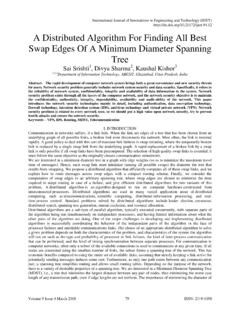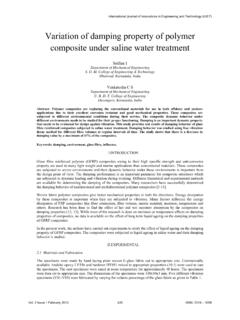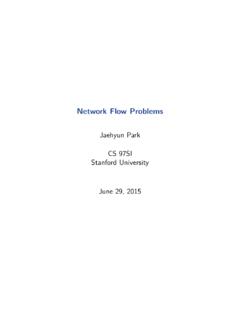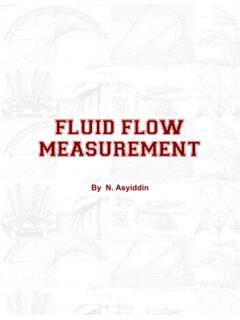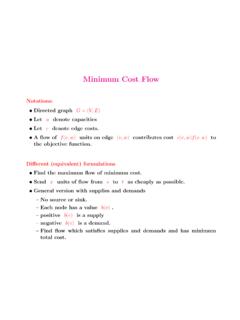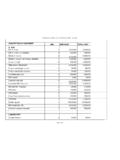Transcription of Assessment of Water Requirement and Calculation of Fire ...
1 Assessment of Water Requirement and Calculation of fire Flow Rates in Water Based fire Fighting Installation Aashish Yadav (Industrial Safety Engg.) Schlor Department of fire Technology& Safety Engineering Institute of Engineering & Science, IPS ACADEMY Prof Praveen Patel Associate ProfessorDepartment of fire Technology& Safety Engineering Institute of Engineering & Science, IPS ACADEMY Abstract- The provision of an adequate and reliable Water supply is critical to the fire -fighting capabilities both from a system stand point and from a manual fire -fighting standpoint. This paper addresses the adequacy, having sufficient flow and pressure, and the reliability, the likelihood that the Water supply will be there when needed, of a Water supply. It discusses and outlines flow test procedures and then manipulates the results obtained during a flow test to identify ways of knowing what is available at different points on the system or at different flow rates.
2 Recognizing that sometimes it is necessary to analyze the condition of the underground pipe, it presents a gradient analysis procedure using the Hazen-Williams formula and solving for either an inside diameter assuming a Cfactor for the pipe or solving for a Cfactorassuming a given diameter of pipe. It is only through frequent testing can the adequacy and reliability of the Water supply be truly verified. These tests must be conducted on a periodic basis and adjusted for seasonal fluctuations Keywords Water flow rate , I. INTRODUCTIONThe amount of Water needed and the economic of supply at are basic problem associated with the Assessment of Water Requirement in Water based fire fighting installation this research paper highlight the outline method used in Calculation of fire flow rates in different Water based fire installation the Water Requirement include the rate of flow ,reduced pressure required at the flow and the quantity required AFFECTING Water REQUIREMENTSC odes and Ordinances fire prevention codes can effectively limit hazards and ignition sources within buildings, which, in turn, limit the number and size of fires by controlling combustibles in a fire area.
3 A good building code further reduces the chance for a serious fire by requiring construction materials and building assemblies that willcontain a developing fire to a given area. Codes alone can reduceconsiderably the amount of Water needed for fire fighting. Zoning ordinances that establish distances between properties can be effective in controlling exposure situationsFire Detection and Extinguishing Systems The increased use of automatic extinguishing systems, whether they use Water or some other agent, will affect the quantities of Water required. Until more widespread use is made of early warning systems and automatic suppression systems, however, it will not be possible to equate the effect of these systems with required fire flow. Water supply requirements are just one factor in a system that determines what the potential for a fire is, how extensive that fire will be,and what measures will be needed to suppress it.
4 Someday research will measure all these factors and allow us to establish fire flows on the basis of thoroughly researched and documented principle History of Water Supply Systems International Journal of Innovations in Engineering and Technology (IJIET)Vol. 4 Issue 1 June 20145 ISSN: 2319 1058 Historically, Water supply systems for cities and towns were developed primarily to provide drinking Water and Water for sanitary purposes rather than for fire protection. However, it was found that large cities that required substantial amounts of Water for domestic purposes usually had enough Water to provide a useful supply for fire -fighting purposes. This led to inquiries in the late nineteenth century into the additional cost of waterworks that could provide Water for fire Fighting, as well as other uses. A number of distinguished engineers associated with individual waterworks examined the problem and presented their findings in technical papers at engineering society meetings.
5 Papers by J. Herbert Shedd,5J. Fanning,6and Emil Kuichling7give the details of discussions in which standards for American and Canadian waterworks were first developed. Number of Hose Streams In these discussions, the starting point for computing the cost of Water for fire protection was to estimate the number of hose stream s that a fire department might need for fire fighting. This was usually estimated using as a basis the central portion of a city where the largest buildings were located and where there was the greatest building congestion. The number of streams was found to be related, in a very rough way, to the population .Shed s proposal, which was the first, used hose streams discharging 200 g pm (757 L/min). He suggested that a community of 5000 would need about five such streams and that the needs of other cities could be graduated up to 30 streams in a city of 180, proposed streams requiring about 54 psi (372 kPa) pressures.
6 His figures were similar to Shed s, beginning at seven streams for a community of 4000 and going up to25 streams for a city of 150,000 . Kuichling suggested a formula in which the number of streams required would be the square root of the population multiplied by There were arithmetical differences as to how these estimates worked out for individual cities, but they were all of the same general order (see most important, they provided a basis from which waterworks designers could estimate costs. The most important paper produced during this time was John R. Freeman s The Arrangement of Hydrants and Water Pipes for the Protection of a City Against fire , published in had done the fundamental work on Water flow through hose and nozzles, so he was able to pin down the definition of a standard fire stream to one with a discharge of 250 gpm (946 L/min) at 40 to50 psi (276 to 345 kPa) pressure.)
7 He said that the relationships suggested by Shed d and fanning between population and the number of streams required were of the right order, but he did not think the needs of individual cities could be quite so definitely ascertained. He suggested two to three streams as a minimum for a population of 1000, graduated up to 30 to 50 streams at 200,000. Most significantly, he warned, Ten streams, or as large a proportion hereof as the financial consideration will permit, may be recommended for a compact group of large, valuable buildings, irrespective of a small population. 8 Engineering: Distribution, Network, Hydrant Spacing, Storage Freeman noted a fundamental difference between systems designed to supply ordinary Water needs and those for fire protection: fire draft required concentration of the Water , whereas domestic draft was a matter of distribution. Freeman asserted that, if a Water system was to supply fire protection needs, the distribution system should be designed to concentrate the needed amounts of Water .
8 Small pipes were sufficient for distribution, but larger ones were needed to concentrate supply to fire streams. He suggested 6-in. (152-mm) diameter pipe as the minimum for residential district and note that 8-in. (203-mm) pipe was adequate only if it formed part of a network of distribution pipes whose intersections were not far apart. Another important point Freeman made was that hydrants should be placed where they could concentrate streams at specific blocks or groups of buildings rather than be placed arbitrarily a certain number of feet (m) apart on the street mains. His work on hose streams showed how long hose lines reduced the Water that can be delivered promptly to a fire . Therefore, he suggest working rule for hydrant spacing of 250 ft (76 m) between hydrants in compact mercantile and manufacturing districts and 400 ft (122 m) to 500 ft (153 m) in residential districts.
9 These working rules can still be used as guides for good design. Freeman further insisted that fire supply should be in addition to maximum domestic consumption, and he laid the foundation for the eventual recognition of this principle. He also calculated how much Water should be stored in standpipes or in elevated reservoirs. He figured that flow for all of the hose streams required should be supplied from a reliable source, as an elevated storage reservoir, for at least 6 hr when the system was also furnishing maximum demands for domestic and other uses. He also calculated that to supply the combined fire and domestic needs in a system provided with reliable pump capacity a 1-hr supply in a standpipe or elevated reservoir would be acceptable. Calculating fire Flow Rates The required flow rate for properties protected by automatic Sprinklers is based on the sprinkler system design as required by the flow required is that of the sprinkler system plus the anticipated hose stream or manual fire -fighting requirements.
10 There are several methods currently used to calculate required Water flow rates for non sprinkle red properties. These include: The Insurance Services Office (ISO) method International Journal of Innovations in Engineering and Technology (IJIET)Vol. 4 Issue 1 June 20146 ISSN: 2319 1058 The Iowa State University (ISU) method The Illinois Institute of Technology Research Institute method Insurance Services Office (ISO) Method One of the most comprehensive and widely recommended methods for estimating fire flow requirements is found in the Insurance Services Office s fire Suppression Rating It provides guidance for estimating fire flow requirements for specific structures and was designed for insurance rating purposes. The flows determined by this method are generally considered a good estimate, and, as a result, the ISO method has received Wide spread use.
